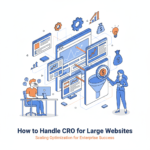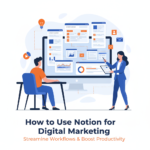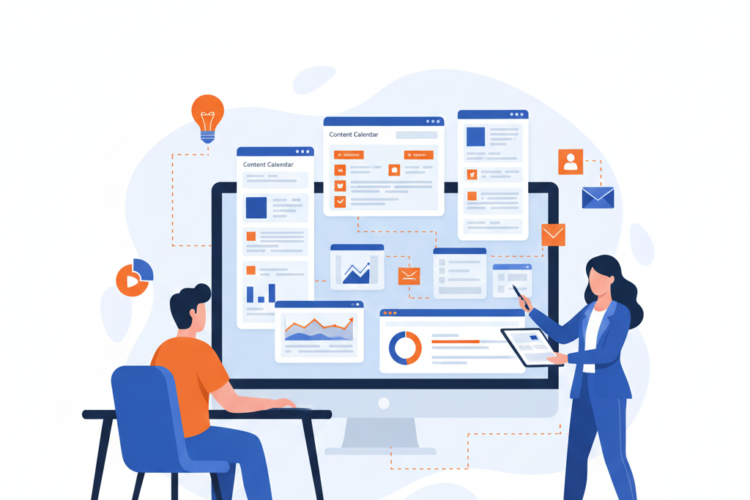
Future of AI in the Marketing Landscape
Future of AI in the Marketing Landscape: A Deep Dive into the Next Era of Digital Transformation
Table of Contents
-
Introduction
-
The Current State of AI in Marketing
-
Key Drivers of AI Adoption in Marketing
-
Core AI Technologies Transforming Marketing
-
Deep Dive: Future AI Applications in Marketing
-
AI in Different Marketing Disciplines
-
Data Privacy, Ethics, and AI Governance
-
The Role of Marketers in an AI-Driven Future
-
Challenges Ahead
-
Emerging Trends and Predictions (2025–2030)
-
Actionable Strategies for Future-Proofing Marketing
-
Final Thoughts
1. Introduction
Artificial Intelligence (AI) is no longer a futuristic concept—it’s now the backbone of digital marketing evolution. From personalization and predictive analytics to content generation and media buying, AI is reshaping how brands connect with customers. But what lies ahead?
This article explores the future of AI in marketing, unpacking its potential, opportunities, ethical concerns, and the evolving role of marketers in a world where machines think, learn, and optimize at scale.
2. The Current State of AI in Marketing
What’s Already Happening:
-
AI Chatbots & Virtual Assistants: Automating customer support (e.g., Drift, Intercom).
-
Predictive Analytics: Forecasting churn, LTV, and buying intent.
-
Personalization Engines: Netflix-style content and product recommendations.
-
Programmatic Advertising: Real-time ad bidding using AI algorithms.
-
Generative AI: Tools like ChatGPT and Midjourney transforming copy, design, and ideation.
Today’s AI helps marketers:
-
Understand their audience.
-
Automate repetitive tasks.
-
Optimize campaigns based on real-time data.
But tomorrow’s AI goes far deeper.
3. Key Drivers of AI Adoption in Marketing
a. Explosion of Data
Marketing generates vast volumes of behavioral, transactional, and intent data. AI thrives on this data to uncover patterns and make decisions.
b. Demand for Hyper-Personalization
Modern consumers expect experiences tailored to their unique behaviors, preferences, and context—at scale. AI enables 1:1 marketing at machine speed.
c. Competitive Pressure
Brands are racing to adopt AI for speed, precision, and cost-efficiency. Those who delay risk irrelevance.
d. Cost Reductions and Efficiency
AI automates manual processes (content creation, segmentation, reporting), allowing marketers to scale without proportional cost increases.
4. Core AI Technologies Transforming Marketing
a. Natural Language Processing (NLP)
-
Enables sentiment analysis, chatbot interactions, content summarization.
-
Powers tools like ChatGPT, Jasper, and Grammarly.
b. Machine Learning (ML)
-
Drives behavioral prediction, product recommendations, campaign optimization.
c. Computer Vision
-
Interprets image/video content for visual search, content moderation, influencer analysis.
d. Generative AI
-
Creates text, images, video, and even code—transforming creative workflows.
e. Reinforcement Learning
-
Continuously learns from user actions to fine-tune campaigns and experiences (used in bidding strategies and personalization engines).
5. Deep Dive: Future AI Applications in Marketing
a. AI-Generated Campaigns from Brief to Execution
-
Marketers input a goal or brand brief.
-
AI selects target audiences, generates creative, sets up ads, monitors performance, and auto-optimizes—all in real time.
b. AI-Powered Content Engines
-
Content generated, tested, and refined by AI.
-
Personalized emails, blog posts, landing pages created dynamically for each user.
c. Emotion AI & Sentiment Mapping
-
Analyzes tone, facial expressions, voice to assess customer emotions.
-
Enables adaptive experiences in real time (ads, customer service).
d. Predictive + Prescriptive Customer Journeys
-
AI predicts what a user will do next and recommends the best action (email, push notification, SMS, etc.).
-
Full journey mapping and automation across all channels.
e. Voice + Multimodal Interfaces
-
AI assistants help consumers discover products using voice, image, and video queries (think: shopping via Alexa + image input).
6. AI in Different Marketing Disciplines
a. SEO & Content Marketing
-
AI tools like SurferSEO, Clearscope, and ChatGPT optimize content in real time.
-
Predictive SEO: AI identifies future keyword trends before they peak.
-
Voice and multimodal search optimization become standard.
b. Performance Marketing
-
AI bidding algorithms outperform human campaign managers.
-
Automated audience segmentation and creative testing at scale.
c. Social Media Marketing
-
AI monitors brand sentiment, identifies viral trends, and even creates content.
-
Influencer marketing powered by AI-matched creator-brand fit analysis.
d. Email & CRM
-
AI scores leads, forecasts churn, and sends hyper-personalized emails based on behavior + timing.
e. CRO (Conversion Rate Optimization)
-
Predicts drop-off points and dynamically adjusts page layouts, CTAs, or messaging in real time.
7. Data Privacy, Ethics, and AI Governance
As AI becomes central to marketing, ethical questions grow louder.
-
Bias in AI Models: Incomplete or skewed data leads to exclusion or discrimination.
-
Data Ownership & Consent: AI needs data, but GDPR, CCPA, and other laws restrict use.
-
Deepfakes & Trust: Generative AI can produce misleading content.
-
Transparency: Who is responsible for AI-driven decisions?
Future Strategies:
-
Use transparent AI systems with explainable models.
-
Adopt zero-party data strategies (collecting data directly from users).
-
Build AI governance frameworks within marketing teams.
8. The Role of Marketers in an AI-Driven Future
AI won’t replace marketers—it will replace marketers who don’t use AI.
Skills of the Future Marketer:
-
Prompt Engineering: Crafting effective inputs for AI tools.
-
Data Fluency: Understanding how to interpret and apply AI insights.
-
Creative Strategy: Leading AI with human imagination.
-
AI Tool Orchestration: Knowing which tools to use, and when.
Marketers must shift from operators to strategists and curators—guiding AI, not competing with it.
9. Challenges Ahead
-
Tool Overload: Dozens of AI tools emerging weekly.
-
Integration Complexity: Hard to unify tools across martech stacks.
-
Human Resistance: Fear of job loss or change can slow adoption.
-
Quality Control: Not all AI-generated content is brand-safe or accurate.
10. Emerging Trends and Predictions (2025–2030)
a. AI-First Martech Stacks
Every major platform will be AI-native, not AI-enhanced.
b. Creative Co-Pilots
Designers, copywriters, and strategists will work alongside AI in real time.
c. Autonomous Campaigns
Campaigns that run, learn, and evolve without human input.
d. Hyper-Personalization at the Molecular Level
Every customer touchpoint will be individualized based on real-time context.
e. Synthetic Influencers & AI Brand Ambassadors
AI personas built by brands will engage audiences on social platforms.
11. Actionable Strategies for Future-Proofing Marketing
-
Start Small: Integrate AI into one workflow (e.g., content ideation, A/B testing).
-
Upskill Teams: Invest in AI literacy, prompt engineering, and data skills.
-
Audit Your Data: Ensure it’s clean, structured, and privacy-compliant.
-
Embrace Experimentation: Run pilot campaigns with AI partners.
-
Build Human + AI Teams: Assign roles where AI excels (speed/scale) and where humans shine (creativity/empathy).
12. Final Thoughts
AI is not just a tool—it’s a shift in how marketing is conceptualized, executed, and measured. The brands that will dominate the next decade aren’t the ones with the biggest budgets, but those that learn how to leverage AI intelligently, ethically, and creatively.
In the future, marketers won’t ask if they should use AI—they’ll ask how much control to give i
Author



